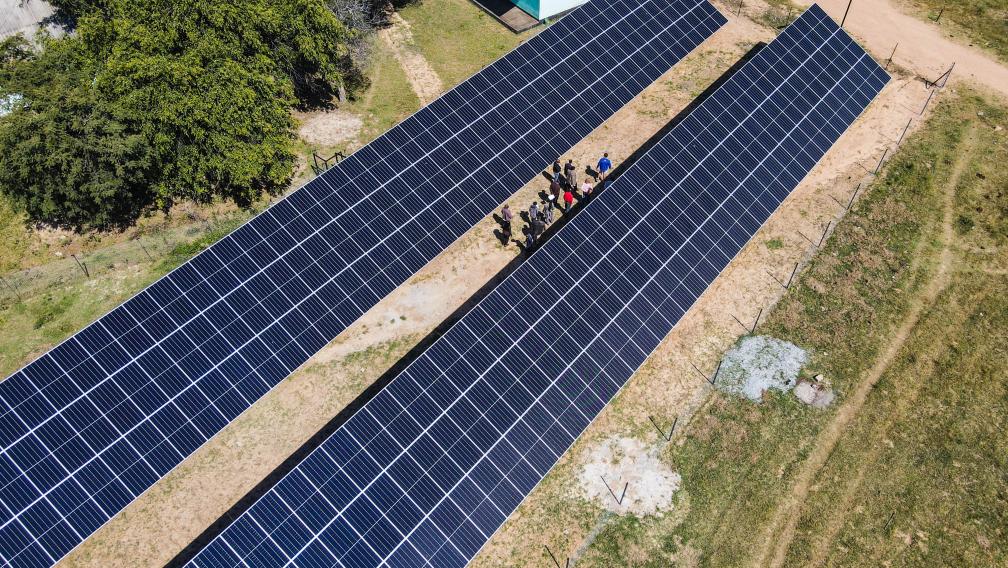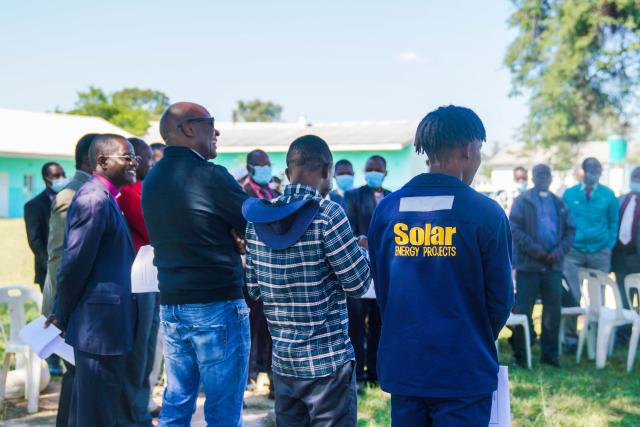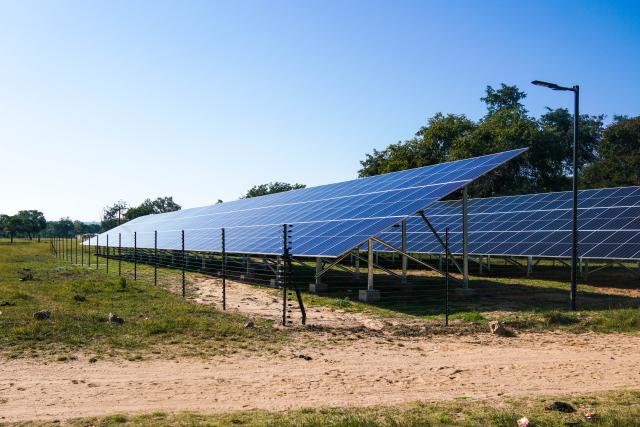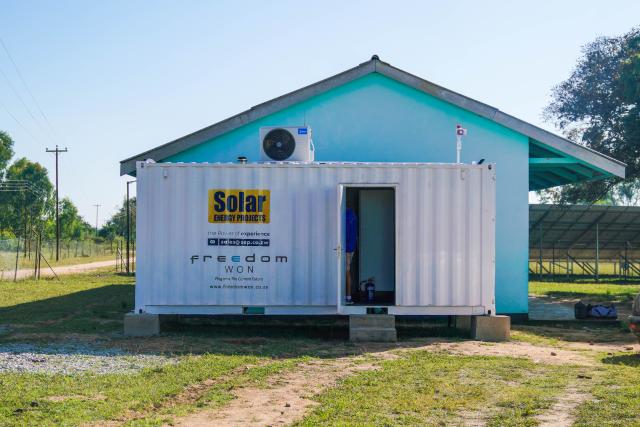The Zambezi River was once an essential food and power source for countries in southeastern Africa, but the impacts of climate change have brought drought and subsequent crop failures, a reduction in fish stocks, and a sharp drop in power from dams that provide electricity. Zimbabwe is one of the countries most affected by the declining water levels in the Zambezi River, as it relies heavily on hydroelectricity. Since April 2019, the country has been struggling with power shortages that significantly impact the well-being of Zimbabweans. Hospitals cannot reliably operate sensitive equipment, businesses cannot power the tools they need to operate, and students cannot study after dark.
St. Patrick’s Mission, located outside Gweru, Zimbabwe, is a major ministry hub for The Anglican Diocese of Central Zimbabwe. The Mission impacts the daily lives of approximately 20,000 people in the surrounding communities through its educational, health, and agricultural programs. The Mission’s campus includes a 450-student primary school, 850-student secondary boarding school, 62-bed hospital, maternity clinic, vocational training center, and agricultural farm. As with much of the region, the Mission’s work has been severely constrained by the lack of a reliable and affordable supply of power, at times suffering for a week without electricity, forcing it to rely on expensive and unsustainable diesel generators.
Knowing climate change would only continue to reduce the river’s water supply and the effectiveness of Zimbabwe’s hydroelectric power plants, Bishop Ignatius Makumbe of the Diocese of Central Zimbabwe looked to secure a more affordable and sustainable solution to electrify the Mission: a pilot solar farm.
With a $300,000 construction grant from Trinity’s Mission Real Estate Development initiative, the Diocese partnered with Tatanga Energy to install a 152-kilowatt solar farm consisting of approximately 360 panels, batteries, and a transformer in May 2022.
Since its installation, the solar farm has had a significant impact on both local residents and Diocesan operations. With reliable affordable energy, the Anglican hospital is on its way to becoming as fully functional and operational as a district hospital; the boarding school is able to operate at night and provide classes to the community, as well as allow students to study as needed; and diocesan businesses that were previously unable to operate are re-opening to provide much-needed materials and jobs to the community.
In addition, the project will generate income for the Diocese through cost savings in the price of electricity, the ability to sell excess electricity back to the grid, and the expanded profitability from increased operational capacity at the hospital and other diocesan projects as a result of more consistent access to electricity. With the extra income, the diocese will be able to better support families affected by displacement, food insecurity, and disability in addition to other community needs.
Beyond the operational and economic benefits the solar farm provides, it also contributes to climate change mitigation. Generating renewable electricity with solar power instead of fossil fuels reduces greenhouse gas emissions and air pollution. With time, this cleaner source of power will improve the health and environment of the Mission’s community and could help slow the impacts of climate change.
Following the success of this 152-kilowatt solar pilot, the diocese is planning to install a much larger 5-megawatt solar power plant. This anticipated $6.5 million solar plant will feed into the national grid and reduce load sharing within the area and nationally. This will provide reliable and affordable electricity to homes, industries, farms, and mines within a much larger radius than the existing 152-kilowatt farm. That project is in the predevelopment stage and has already received a government license to operate.
St. Patrick’s Solar Farm has already made an incredible impact on the surrounding communities, but the positive effects of the project are only just beginning. Moving forward, the solar farm and its potential expansion can be used as a model for other communities, dioceses, and governments that are facing similar challenges and looking for sustainable and profitable energy solutions that will benefit their communities for the long term. Hear more about the solar farm's impact in the following video from Solar Energy Projects.



